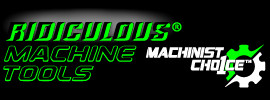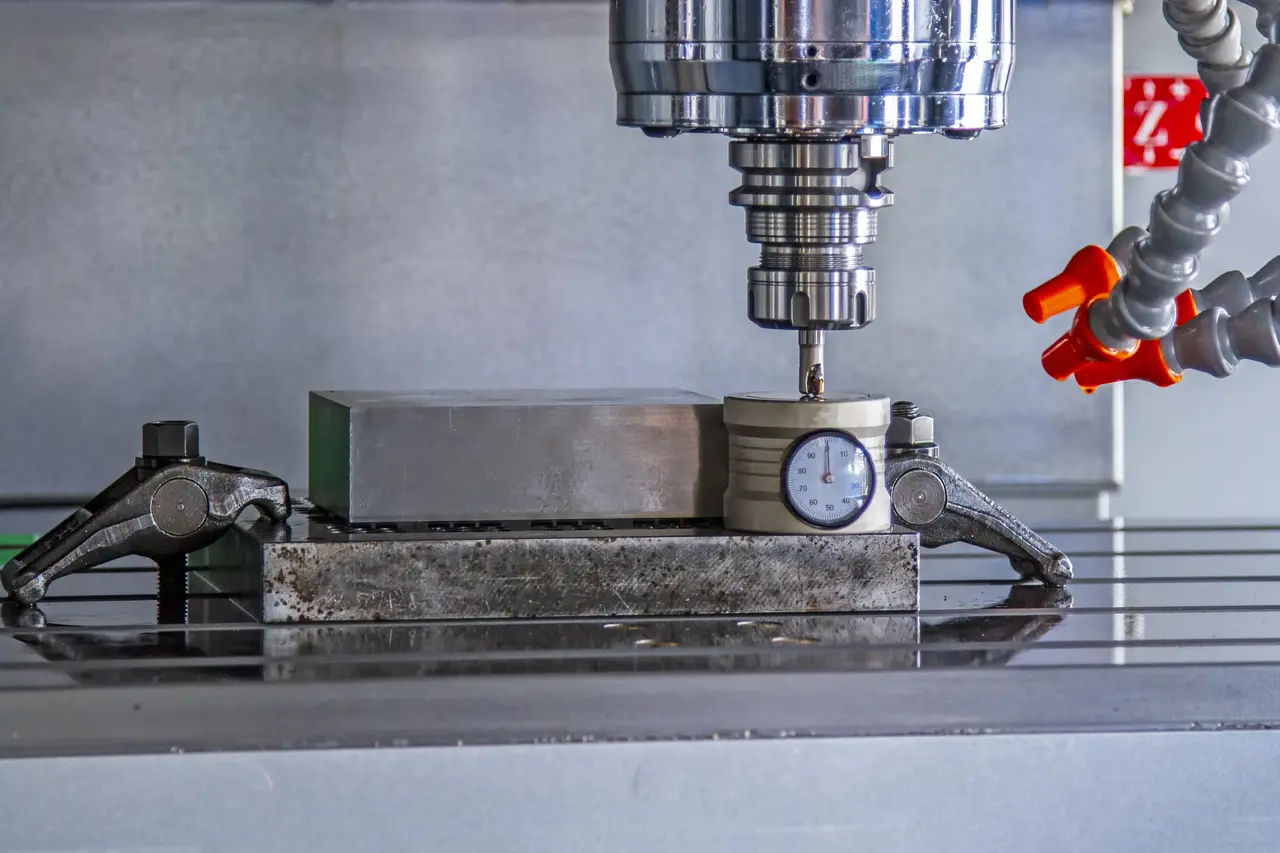The Evolution of Collet Chucks in Modern Manufacturing: What Machinists Need to Know
Posted by RMT on Mar 25th 2024
Introduction to Collet Chucks in Manufacturing
The ER collet chuck system consists of a dynamically balanced chuck and a collet designed to securely hold the tool in place. With its unique slit pattern, the collet offers a wide clamping range and exceptional precision. When the collet nut is tightened onto the chuck, it compresses the collet, ensuring an even distribution of clamping force along the tool shank. This setup enables quick tool changes, providing a stable grip with minimal runout, making it ideal for high-precision machining applications.
The Early Days of Collet Chucks: A Historical Overview
The ER collet system, widely recognized for its versatility and accuracy in clamping various tool diameters, has its origins rooted in the innovative engineering landscape of Switzerland. It was invented in the 1970s by the company Rego-Fix, led by Fritz Weber, a visionary in the field of precision tooling. Weber, driven by the need for a more flexible and precise tool holding system, sought to revolutionize the manufacturing and metalworking industries with a design that would accommodate a wide range of tool diameters without compromising clamping force or accuracy.
Before the advent of the ER collet system, machinists and manufacturers were often constrained by the limitations of existing collet systems, which required different collets for varying tool sizes, leading to inefficiencies and increased costs. Recognizing these challenges, Weber and his team embarked on a quest to create a universal tool holding system that would not only enhance precision but also offer unparalleled flexibility.
Understanding the Mechanics of Collet Chucks
Collet chucks are key to precision in machining. Think of them as the clasp that holds the tool or workpiece securely in place while the machine does its work. They use a cylindrical sleeve known as a collet to grip the tool or workpiece. To get it working, the collet is inserted into the chuck, and as the chuck tightens, the collet clamps down evenly on the tool or workpiece. This even pressure is vital for accuracy and preventing damage to delicate parts. There are mainly two types of collet chucks: manual and power. Manual ones need a wrench to tighten and loosen, making them simpler but slower. Power collet chucks, however, use hydraulic or pneumatic power, making them faster and more consistent, ideal for high-volume production. The main takeaway? Collet chucks are the unseen heroes making sure everything in the machining world stays precisely where it should.
Key Developments in Collet Chuck Technology
Collet chucks have come a long way, and staying on top of their evolution is a must for any serious machinist. Initially, the focus was on manual tightening and basic materials. Now, we're looking at automation and precision-engineered components. A big game-changer was the introduction of quick-change systems. This meant less downtime swapping out parts, boosting productivity massively. Additionally, materials got an upgrade. We saw the shift to high-grade alloys, which meant collet chucks could handle higher speeds and loads without batting an eye. Then there's precision. Modern collet chucks come with micron-level accuracy. This allows machinists to work on complex parts without worrying about errors. Last but not least, the integration of smart technology. This lets operators monitor performance in real-time, making adjustments on the fly for the best results. Keeping up with these developments isn't just smart; it's essential for staying competitive in today's manufacturing world.
The Role of Collet Chucks in Modern CNC Machinery
In the world of modern manufacturing, collet chucks are the unsung heroes. These devices play a crucial role in CNC machinery, ensuring that tools stay in place and workpieces are machined with precision. Simply put, a collet chuck is a clamp that holds onto a tool or workpiece. Why does this matter? It's all about accuracy and efficiency.
When a machinist locks a tool or piece into a collet chuck, they ensure minimal movement during the machining process. This is vital for creating parts that meet strict specifications. Imagine trying to cut a complex part but your tool keeps shifting—disaster. With collet chucks, that's not a worry.
Additionally, the adaptability of collet chucks to hold various sizes and shapes without requiring multiple specialized holders means shops can switch between jobs quickly. That's a big win for productivity.
Bottom line: Collet chucks are key players in the efficiency and precision of modern CNC machinery. Whether for drilling, milling, or turning, these tools help machinists maintain the high standards the manufacturing industry demands.
Advantages of Using Collet Chucks for Precision Work
Collet chucks have become a go-to for machinists aiming for precision. Here's the deal: they hold tools or workpieces securely, ensuring high accuracy in machining tasks. The primary advantage is their incredible grip strength, minimizing vibration. This leads to smoother finishes and precise cuts, critical for high-quality work. Another plus is their versatility. Collet chucks adapt to various sizes and shapes, making them suitable for numerous projects without needing multiple tools. They're also known for quick setup times, boosting productivity. Simply put, using collet chucks means better precision, versatility, and efficiency in the shop.
How Collet Chucks Have Changed Manufacturing Workflows
Collet chucks have revolutionized the way we approach manufacturing. Back in the day, changing tools on a machine could take a significant chunk of time, slowing down production. But now, with the advent of collet chucks, this process has become swift and seamless. What used to take hours now only takes minutes, or even seconds. This drastic reduction in tool change time means machines spend more time working and less time sitting idle, boosting efficiency in factories. Not only do collet chucks speed things up, but they're also incredibly precise. They grip tools uniformly, enhancing stability and accuracy in machining. This precision leads to higher quality products with fewer errors, saving materials and money. Additionally, the versatility of collet chucks, being able to hold different sized tools, has streamlined operations. Manufacturers don't need a wide array of equipment for different jobs anymore. A single machine, equipped with a collet chuck, can handle various tasks, making production lines more flexible and reducing the need for specialized machinery. This transformation in manufacturing workflows has paved the way for leaner, more efficient, and cost-effective production methods, proving just how much impact collet chucks have had on the industry.
Selecting the Right Collet Chuck for Your Machining Needs
Selecting the right collet chuck for your machining needs isn't as tough as it sounds. Think of it like picking the right tool for a job. First, understand what you're working with and what you need. There are a few key points to consider when making your choice. First, look at the size of the workpiece you plan to machine. Different collet chucks suit different sizes, so match them up. Next, check the precision level needed for your work. High precision jobs need high accuracy chucks. Then, think about your machine's compatibility. Not all chucks fit all machines, so ensure it's a match. Also, consider the type of operation you're doing. Heavy-duty versus high-speed operations need different types of chucks. Lastly, don't ignore the cost. More features mean a higher price, but don't skimp on quality for a few bucks. The right collet chuck enhances efficiency and precision in your work, making it a smart investment for any machinist.
Maintenance and Care for Collet Chucks
Taking care of collet chucks is straightforward but crucial for their performance and longevity. Start with regular cleaning. Every time you change a tool, wipe down the collet and chuck with a clean, dry cloth to remove any debris or oil. This prevents build-up that can cause slippage or misalignment. Lubrication is the next step. Apply a thin layer of machine oil on the collet chuck’s moving parts. This reduces friction, which can lead to wear and tear over time. Don’t forget about inspection. Regularly check for signs of wear or damage. Look closely at the gripping surface of the collet. If you notice any irregularities, it might be time for a replacement. Also, ensure the collet chuck is aligned properly. Misalignment can affect the machining accuracy and the tool's life. If you spot any issues during inspection, don’t hesitate to get a professional opinion. Sometimes, a problem that seems minor can escalate if not addressed promptly. Remember, a little care can go a long way in keeping your collet chucks in top shape, ensuring your manufacturing processes run smoothly and efficiently.
The Future of Collet Chucks in Advanced Manufacturing
The future of collet chucks in advanced manufacturing looks promising. As technology advances, so does the machinery and its components, meaning collet chucks are becoming more versatile and efficient. With the rise of automation and precision engineering, the demand for high-quality collet chucks has increased. Manufacturers are now focusing on creating collet chucks that are not only stronger and more durable but also smarter. Features like automatic size adjustment and real-time feedback to machines are in development. This means less downtime and more productivity for machinists. Plus, with the industry leaning towards sustainability, we can expect to see innovations aimed at reducing waste and increasing the lifespan of these essential tools. The bottom line is, as manufacturing evolves, so will collet chucks, making them indispensable in the workshop of the future.



